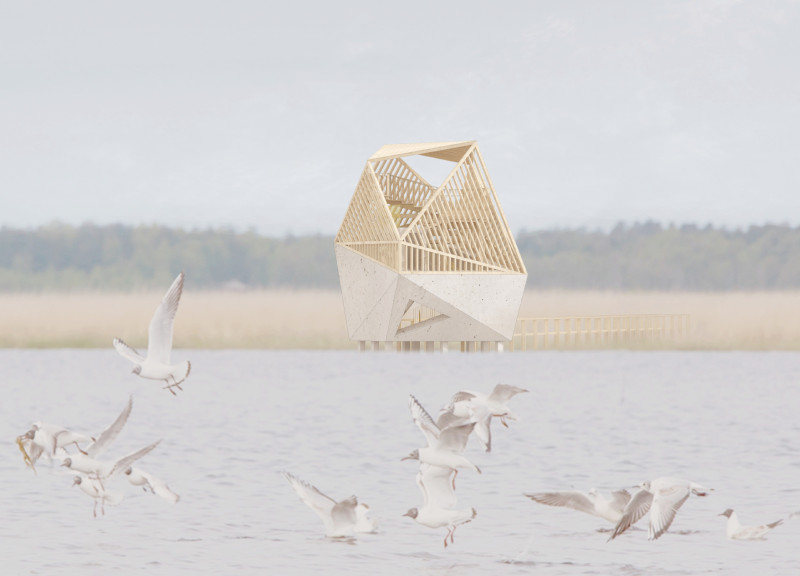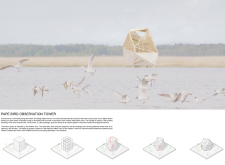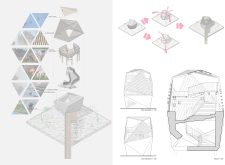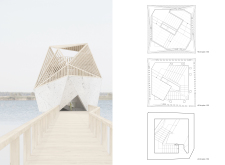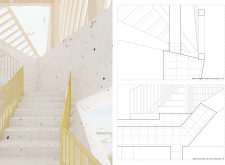5 key facts about this project
At its core, the project embodies a sense of place, reflecting the unique characteristics of its geographical location. The design narrative engages with local traditions while incorporating modern architectural practices, resulting in a seamless blend of old and new. The building's facade, featuring expansive glass panels, invites natural light deep into the interior, creating a luminous and welcoming atmosphere that encourages social interaction. The strategic use of transparent materials not only enhances visual connectivity with the outdoors but also reinforces the building's link to its community, inviting passersby to engage with the space.
Internally, the layout is organized around a central atrium that functions as the heart of the project. This design choice promotes collaboration and connectivity, encouraging movement between different areas. Surrounding the atrium, various functional spaces are designed with flexibility in mind, allowing for adaptable use depending on the needs of the community. This responsiveness to the users’ requirements is a hallmark of the project, showcasing a modern understanding of how space can influence human behavior and interaction.
A notable aspect of the project is its commitment to sustainability. The architectural design incorporates a green roof system that not only enhances thermal performance but also supports biodiversity by providing habitat for local flora and fauna. Additionally, renewable energy sources are integrated into the building's infrastructure, such as solar panels that significantly reduce the carbon footprint. This sustainable approach represents a forward-thinking perspective in architecture, ensuring that the project aligns with contemporary environmental standards while also addressing practical energy needs.
The use of materials is a critical component of the project's identity. Reinforced concrete is skillfully employed for its structural capabilities, allowing for fluid architectural forms that enhance the overall aesthetic. The warm tones of wood are featured throughout the interiors, providing a tactile contrast to the cooler surfaces of glass and concrete. This careful selection not only emphasizes texture but also contributes to a harmonious sensory experience within the space. In tandem with steel accents, these materials create an engaging dialogue that enriches the architectural narrative.
Unique design approaches within the project can be seen in the integration of outdoor and indoor spaces. Courtyards and terraces are strategically positioned to foster connections with nature, allowing for outdoor activities that enhance the overall user experience. The landscaping complements the architectural elements, blurring the boundaries between the built environment and its natural context. This thoughtful design consideration promotes well-being and encourages occupants to engage with their surroundings actively.
Exploring the architectural plans and sections of this project reveals deeper insights into its structural ingenuity and aesthetic aspirations. Each design decision is informed by the desire to create a meaningful space that responds to community needs while standing as a testament to architectural excellence. The architectural designs reflect a comprehensive understanding of the relationship between space, light, and material, resulting in an environment that is both functional and inviting.
As you delve into the project presentation, take the opportunity to examine the architectural elements closely. The details embedded in the architectural plans and sections will provide a thorough understanding of the design's intricacies and the thought processes behind the decisions made throughout the project. This exploration not only highlights the architectural ideas at play but also invites further reflection on how such designs can continue to shape and enhance community life in meaningful ways.


